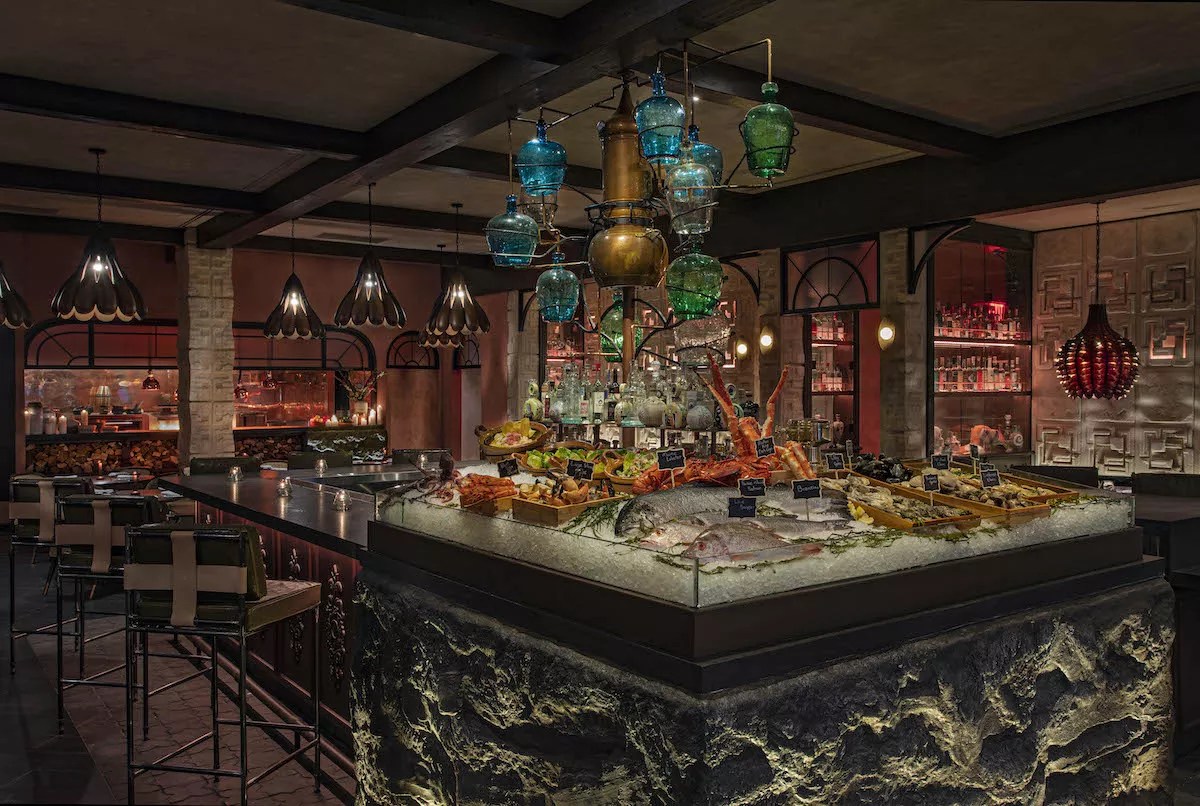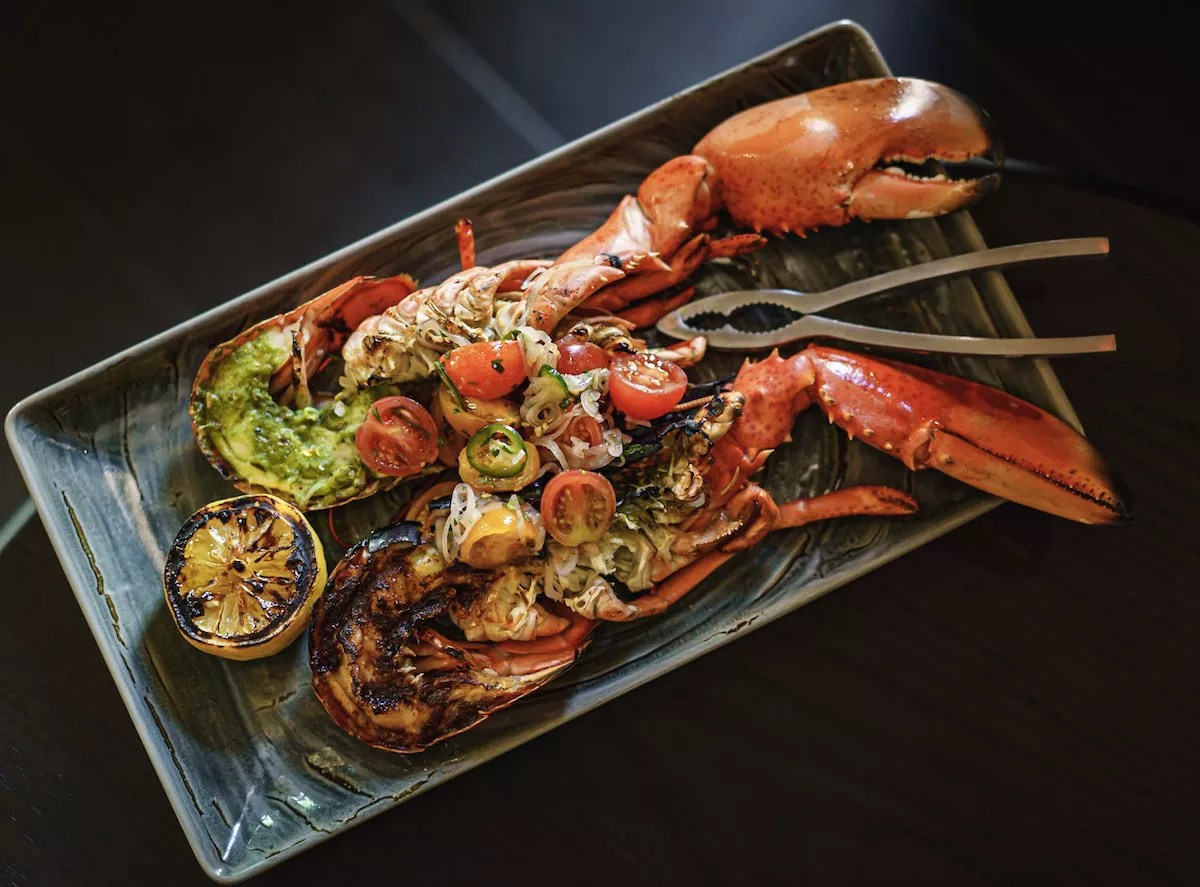
Photo by Michael Kleinberg

Audio By Carbonatix
Local Miami-grown brand the Coyo Taco Group is expanding this month with several recent openings, including Serena at the Moxy Miami South Beach hotel and the Oasis in Wynwood.
The Moxy opened in February, unveiling several dining concepts from the founders of 1-800-Lucky and Coyo Taco. Now, joining Serena and Los Buenos is Como Como, a seafood restaurant and raw bar.
Como Como, the brand’s take on a marisquería – or traditional Mexican seafood restaurant- opens along with Mezcalista, a mezcal lounge making its debut at the hotel this week.
Como Como is a play on the Spanish words for “how I eat” – a nod to the group’s focus on more than just how the restaurant looks, but also how the guest’s experience is connected to the cooking itself. At Como Como, how your food is created becomes part of the show.
According to Coyo Taco Group executive chef Scott Linquist, the Como Como menu has been designed to channel the flavors of Mexico’s most lauded seaside destinations, from Puerto Escondido and Los Cabos to Acapulco. The idea was to create an authentic take on the marisquería.
At the dining room center, guests will find a copper-and-wrought-iron fuego (fire station) where they can watch as whole fish are cooked over a wood-burning grill. Here, Linquist will prepare dishes that elevate traditional techniques with a theatrical dining experience, with most dishes priced between $28 to $52.
Many dishes feature whole grilled fish caught in local waters, such as pescado a la talla, snapper that is butterflied, grilled, and painted with two marinades. Tikin-xic is a Mayan preparation of whole branzino flavored with bitter orange, habanero chiles, and achiote. The fish is cooked in banana leaves and unwrapped, fragrant and steaming, at the table. Tableside presentations add to the show, whether a traditional Caesar salad (a dish born in Tijuana, Mexico) or ha and-chopped tartar de pescado (fish of the day).
The barra cruda (raw bar) is a monolithic, rough-cut stone in the middle of the dining room where raw offerings are displayed. Each comes with a Mexican twist like oysters served with a pineapple-vinegar mignonette or a picadillo made with tomatillos and cucumbers.

The langosta from Como Como inside the Moxy Miami South Beach.
Photo by Hakien Pagan
Other dishes on the dinner menu include alambre al pastor. A variation on Mexico City’s al pastor tacos, here it’s offered as scallops or pork tenderloin grilled on skewers with pineapple and spring onions. The restaurant also has a rotating selection of meat dishes, including chuletón (ribeye steak), filete (filet mignon), and adobo marinated rack of lamb, all of them flame-grilled in the fuego and served with a variety of house-made sauces and condiments.
Vegetable dishes are roasted in the fuego’s Josper charcoal oven and served in cast-iron pans, including esquites, roasted corn with homemade garlic aioli, morita chile, and cotija cheese; and roasted artichokes with roasted jalapeño aioli, buttery herbed bread crumbs, and charred lemon. Many dishes are accompanied by tortillas, ground and pressed in-house and cooked on a comal, the traditional Mexican griddle.
Inside, the restaurant’s interior was given equal attention to detail. Saladino Design Studios designed the space to exhibit a catacomb-like area dedicated to the ancient traditions of mezcal, the spirit first distilled centuries ago. Copper shelves hold glass bottles of mezcal and tequila. The stone- and brick-lined walls display Mesoamerican artifacts, while carved wooden doorways and a wrought-iron archway lead guests into the main dining room. The restaurant also features outdoor courtyard dining layered with colored tiles, hanging plants, and stone gardens.
Perhaps the most eye-catching structural element of Como Como, however, is its “tequila tree,” Sean Saladino, Director of Saladino Design Studios, tells New Times.
At the center of the bar sits a sculpture made of hand-blown glass spheres and copper pipes; the art is meant to symbolize the distillation process that transforms the blue agave plant into tequila and mezcal. It’s functional, to boot – tequila travels through the branches of glass and metal before it is dispensed by bartenders to become one of Como Como’s cocktails.
“We pride ourselves on telling a deeper story with an imperfect, chaotic design,” shares Saladino, whose wife’s family hails from Guadalajara. “We had this idea of creating a sculptural piece that would show how tequila is made. There’s no such thing as a tequila tree in reality, but we wanted it to feel as if it were something you might see in Mexico. Most designers would stop at that, but we took a deep dive into the engineering to figure out how it would function, how the tequila would be stored and poured off and served to the customer.”
Opening for private events today – and to the public in June – the Mezcalista offers an impressive collection of more than 100 types of mezcal and tequila. The space is accessed by a discreet entrance in the back of Como Como. Expert mezcaliers will be on-hand to engage with guests and explain the different floral and smoky notes. The lounge’s vibe ranges from intimate and relaxing early in the week to chic and exclusive on the weekends, with performances from live guest DJs.
Como Como. 915 Washington Ave., Miami Beach; 305-423-8004; comocomomiami.com